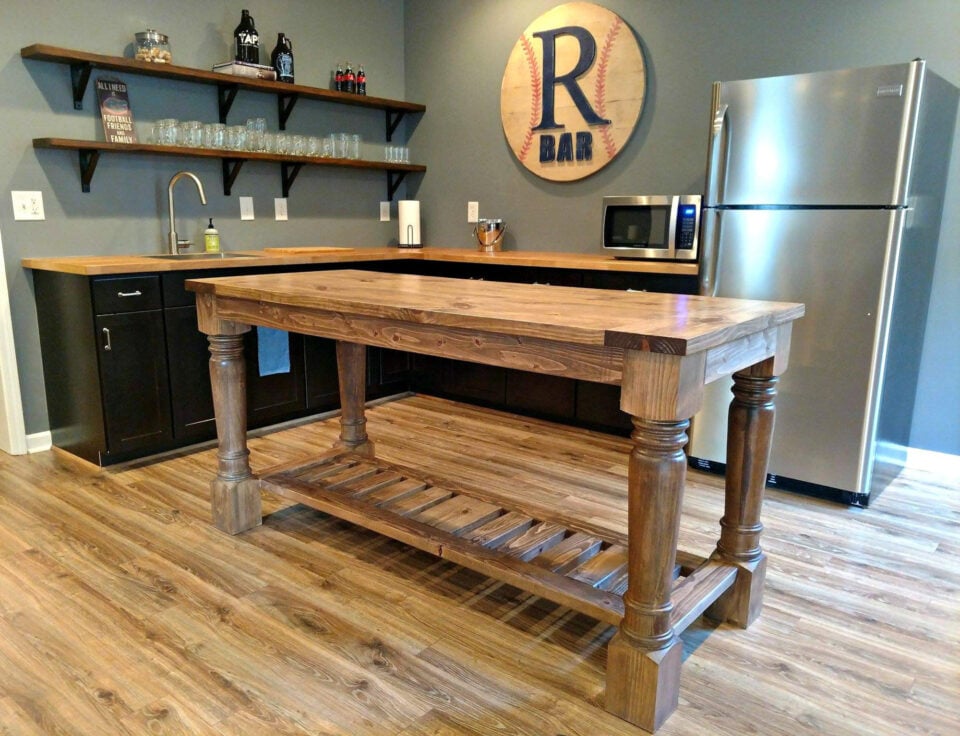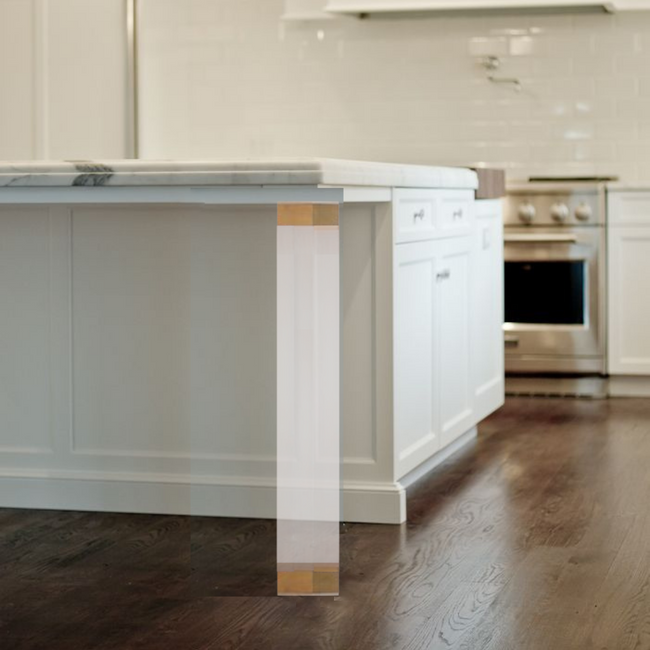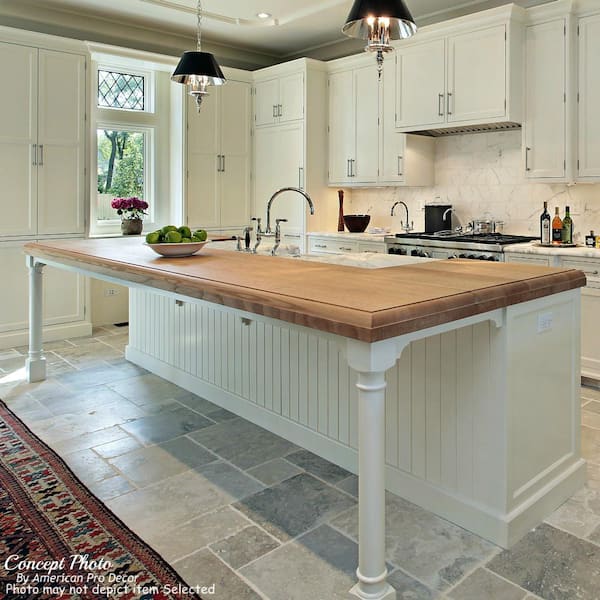Transform Your Space with Innovative Kitchen Island Leg Layouts
Transform Your Space with Innovative Kitchen Island Leg Layouts
Blog Article
The Relevance of a Sturdy Kitchen Area Island Leg in Producing a Useful Cooking Location
A strong cooking area island leg acts as a basic element in developing a practical food preparation environment, offering necessary assistance for both the counter top and numerous kitchen activities. The stability it provides can significantly decrease the danger of crashes in high-traffic areas, while additionally contributing to the total visual comprehensibility of the room. As kitchens develop into multifunctional locations for food preparation, eating, and interacting socially, the option of materials and style considerations for island legs ends up being increasingly vital. Comprehending these components can transform your kitchen into a more secure and extra efficient area, motivating additional expedition into the most effective choices available.
Benefits of Sturdy Island Legs
Giving crucial assistance, strong cooking area island legs play a critical duty in enhancing the functionality and durability of kitchen islands - kitchen island leg. These legs not just birth the weight of the kitchen counter and any additional products put on the island, but additionally add to the overall security of the framework. A well-supported cooking area island guarantees that it remains upright and useful, even under hefty usage, which is specifically crucial in active kitchen atmospheres
In addition, durable island legs can improve the aesthetic appeal of the kitchen. They give a solid structure that can complement various design styles, from contemporary to conventional. This convenience enables homeowners to personalize their kitchen islands according to individual preference while making sure that the architectural honesty remains uncompromised.
Along with their helpful function, durable kitchen island legs can likewise improve safety and security. A steady island minimizes the threat of mishaps created by wobbling or tipping, which is especially vital in houses with youngsters or elderly individuals. Additionally, strong legs can assist in a smooth flow of tasks, permitting efficient dish preparation and social interactions within the kitchen area area. Inevitably, investing in strong kitchen area island legs is necessary for a functional and aesthetically pleasing cooking area.
Materials for Kitchen Island Legs
When selecting products for kitchen island legs, longevity and aesthetic appeal are critical variables to take into consideration. The most usual materials consist of wood, steel, and engineered timber, each offering special advantages.
Hardwood, such as oak, cherry, or maple, is a timeless selection as a result of its strength and classic appeal (kitchen island leg). It can hold up against significant weight and is resistant to wear, making it perfect for high-use kitchen settings. In addition, hardwood can be tarnished or painted to match numerous cooking area designs
Steel legs, usually crafted from stainless-steel or wrought iron, give a industrial and modern-day appearance. They are unbelievably solid and can sustain considerable lots while being immune to moisture and warmth, which is useful in a cooking area. Steel legs can also be easily cleansed, boosting their functionality.

Design Considerations for Stability
The option of materials for kitchen area island legs directly affects the design factors to consider for stability. When making a kitchen island, it is vital to evaluate the weight-bearing ability of the chosen products. Much heavier materials, such as strong timber or metal, typically give Bonuses greater stability, specifically under the stress of day-to-day use.
In addition, the leg design have to incorporate proper geometry to improve stability. A bigger base increases the support area, decreasing the risk of tipping or wobbling. Consideration should additionally be provided to the height of the legs; disproportionate leg lengths can result in imbalance, compromising the total security of the island.
Moreover, the distribution of weight across the island is crucial. Guaranteeing that the leg positioning aligns with the heaviest parts, such as appliances and counter tops, will certainly better boost stability.
Maintenance Tips for Longevity

Cleaning is one more critical aspect of upkeep. Relying on the product of the legs-- whether wood, steel, or composite-- proper cleansing approaches should be employed. For wooden legs, a gentle clean with a wet towel and an ideal wood cleaner will help maintain their finish. Metal legs might need a light polish to avoid rust and maintain their radiance.
In addition, tightening up screws and bolts on a regular basis can make certain security and protect against tottering. If the cooking area island experiences heavy usage, consider enhancing the legs with extra brackets or supports to improve toughness. Your Domain Name Applying a safety surface or sealant can protect versus moisture and stains, extending the lifespan of the legs. By following these maintenance pointers, home owners can ensure their kitchen island legs stay robust and functional for several years ahead.
Choosing the Right Leg Design
Normal maintenance makes certain that kitchen area island legs continue to be practical and strong, yet picking the right leg design is similarly vital for both appearances and assistance. The selection of leg design can significantly affect the general layout and harmony of your cooking area.

Functionality is one more crucial facet. Thicker legs or those with a durable read this post here base can support larger counter tops and tools, enhancing the island's utility. On the other hand, slender legs might create a ventilated look, appropriate for lighter designs however possibly less encouraging.
Final Thought
In summary, the relevance of sturdy kitchen area island legs can not be overstated in the production of a useful cooking area. These legs give vital support, improve security, and contribute to the total visual of the kitchen area. By meticulously selecting proper materials and designs, as well as applying appropriate maintenance techniques, the longevity and efficiency of cooking area islands can be ensured. Ultimately, buying robust island legs is fundamental to attaining a efficient and secure cooking atmosphere.
A durable kitchen area island leg serves as a fundamental component in establishing a practical food preparation atmosphere, providing required support for both the kitchen counter and various kitchen area activities.Giving essential assistance, tough cooking area island legs play a pivotal role in improving the functionality and toughness of kitchen area islands. Ultimately, spending in durable kitchen area island legs is crucial for a practical and visually pleasing cooking location.
Factor to consider needs to likewise be given to the height of the legs; disproportionate leg lengths can lead to inequality, jeopardizing the total security of the island.
Wood legs offer heat and a timeless look, while steel legs use a commercial and contemporary feel.
Report this page